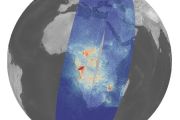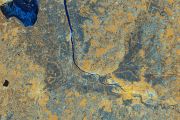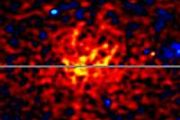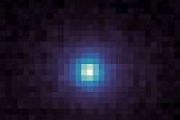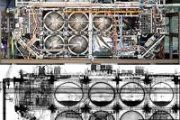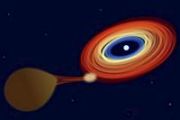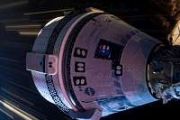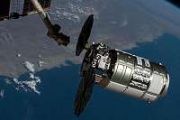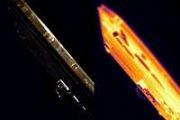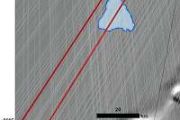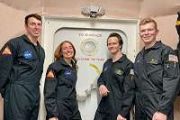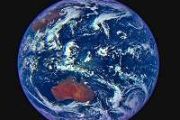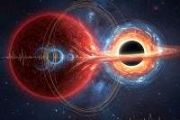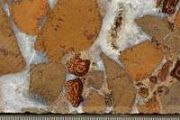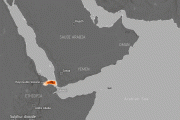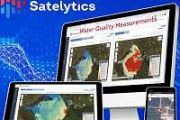
Copernical Team
SpaceX launches Starship megarocket on successful test flight
 SpaceX's massive Starship rocket soared through Texas's golden-hour skies Monday before splashing down successfully, as the US company vies to silence critics who doubt Elon Musk's startup can deliver NASA's lunar projects on time.
In its 11th test voyage, the enormous rocket took off Monday from Space X's south Texas launch facilities just after 6:25pm local time (2325 GMT), according to a
SpaceX's massive Starship rocket soared through Texas's golden-hour skies Monday before splashing down successfully, as the US company vies to silence critics who doubt Elon Musk's startup can deliver NASA's lunar projects on time.
In its 11th test voyage, the enormous rocket took off Monday from Space X's south Texas launch facilities just after 6:25pm local time (2325 GMT), according to a SpaceX to launch Starship test flight Monday
This request seems a bit unusual, so we need to confirm that you're human. Please press and hold the button until it turns completely green. Thank you for your cooperation!
Press and hold the button
If you believe this is an error, please contact our support team.
185.132.36.159 : 458c71b9-4311-44fc-8af7-c08e2b43
Swarm reveals growing weak spot in Earth’s magnetic field

Using 11 years of magnetic field measurements from the European Space Agency’s Swarm satellite constellation, scientists have discovered that the weak region in Earth’s magnetic field over the South Atlantic – known as the South Atlantic Anomaly – has expanded by an area nearly half the size of continental Europe since 2014.
Physics informed AI forecasts safer tokamak rampdowns for future fusion plants
 MIT researchers have unveiled a prediction method that blends a physics-based plasma model with machine learning to manage tokamak rampdowns more safely and reliably. The approach targets disruption avoidance when plasma current is reduced, a critical step for future grid-scale fusion plants.
Tested on Switzerland's TCV device using several hundred plasma pulses, the hybrid model accuratel
MIT researchers have unveiled a prediction method that blends a physics-based plasma model with machine learning to manage tokamak rampdowns more safely and reliably. The approach targets disruption avoidance when plasma current is reduced, a critical step for future grid-scale fusion plants.
Tested on Switzerland's TCV device using several hundred plasma pulses, the hybrid model accuratel USF study: Ancient plankton hint at steadier future for ocean life
 A team of scientists has uncovered a rare isotope in microscopic fossils, offering fresh evidence that ocean ecosystems may be more resilient than once feared.
In a new study co-led by Patrick Rafter of the University of South Florida, researchers show that warming in the tropical Pacific - home to some of the world's most productive fisheries - may not trigger the severe declines predicte
A team of scientists has uncovered a rare isotope in microscopic fossils, offering fresh evidence that ocean ecosystems may be more resilient than once feared.
In a new study co-led by Patrick Rafter of the University of South Florida, researchers show that warming in the tropical Pacific - home to some of the world's most productive fisheries - may not trigger the severe declines predicte GEO-MEASURE brings survey-grade precision to everyone
 GEO-MEASURE, the new handheld GNSS rover from GEODNET, is redefining field surveying by combining professional-grade accuracy with consumer-level simplicity and affordability. The compact device integrates robust hardware, a mobile app, and preloaded RTK corrections in a single turnkey package priced at just $695, including one year of correction service.
Equipped with 1,408 satellite chan
GEO-MEASURE, the new handheld GNSS rover from GEODNET, is redefining field surveying by combining professional-grade accuracy with consumer-level simplicity and affordability. The compact device integrates robust hardware, a mobile app, and preloaded RTK corrections in a single turnkey package priced at just $695, including one year of correction service.
Equipped with 1,408 satellite chan Spirals in young star disk reveal planet formation process
 Observations with the Atacama Large Millimeter/submillimeter Array (ALMA) have captured the motion of spiral structures in the disk of dust and gas surrounding the young star IM Lup, offering new evidence that these features are linked to the earliest stages of planet formation.
Located 515 light-years away in the constellation Lupus, IM Lup's protoplanetary disk displays spirals that astr
Observations with the Atacama Large Millimeter/submillimeter Array (ALMA) have captured the motion of spiral structures in the disk of dust and gas surrounding the young star IM Lup, offering new evidence that these features are linked to the earliest stages of planet formation.
Located 515 light-years away in the constellation Lupus, IM Lup's protoplanetary disk displays spirals that astr Asteroid rotation patterns reveal new insights into their interiors
 Whether an asteroid spins smoothly or tumbles chaotically has now been linked to its history of collisions, according to new findings from ESA's Gaia mission presented at the EPSC-DPS2025 Joint Meeting. The research provides a method to probe asteroid interiors, an advance with major implications for planetary defense strategies.
"By leveraging Gaia's unique dataset, advanced modelling and
Whether an asteroid spins smoothly or tumbles chaotically has now been linked to its history of collisions, according to new findings from ESA's Gaia mission presented at the EPSC-DPS2025 Joint Meeting. The research provides a method to probe asteroid interiors, an advance with major implications for planetary defense strategies.
"By leveraging Gaia's unique dataset, advanced modelling and Ramses: ESA’s mission to rendezvous with asteroid Apophis
 Video:
00:01:33
Video:
00:01:33
Friday the 13th of April 2029 will be our lucky day.
Apophis, a 375-metre-wide asteroid, will safely pass Earth at a distance of less than 32 000 kilometres. For a few hours, Apophis will be closer than satellites in geostationary orbit and visible to the naked eye from Europe and Africa.
Space agencies have sent a number of spacecraft to asteroids, but we have never had a mission at an asteroid as it sweeps past a planet. This grand natural experiment offers a unique opportunity to study in real time how an asteroid responds to a strong external force – and the European Space Agency aims to have a front-row seat.
To this end, ESA’s Space Safety Programme has proposed the Rapid Apophis Mission for Space Safety (Ramses). If approved, Ramses would launch a
Momentus Expands NASA Partnership with Dual Contracts for In-Space Manufacturing and Propulsion Demonstrations
 Momentus Inc. (NASDAQ: MNTS), the U.S. commercial space company specializing in in-space transportation and orbital services, has secured two new NASA contracts totaling $7.6 million to advance space-based manufacturing and propulsion technologies.
The first award, a $5.1 million contract granted on September 26 through NASA's Flight Opportunities program, will support the Commercial Orbit
Momentus Inc. (NASDAQ: MNTS), the U.S. commercial space company specializing in in-space transportation and orbital services, has secured two new NASA contracts totaling $7.6 million to advance space-based manufacturing and propulsion technologies.
The first award, a $5.1 million contract granted on September 26 through NASA's Flight Opportunities program, will support the Commercial Orbit 






